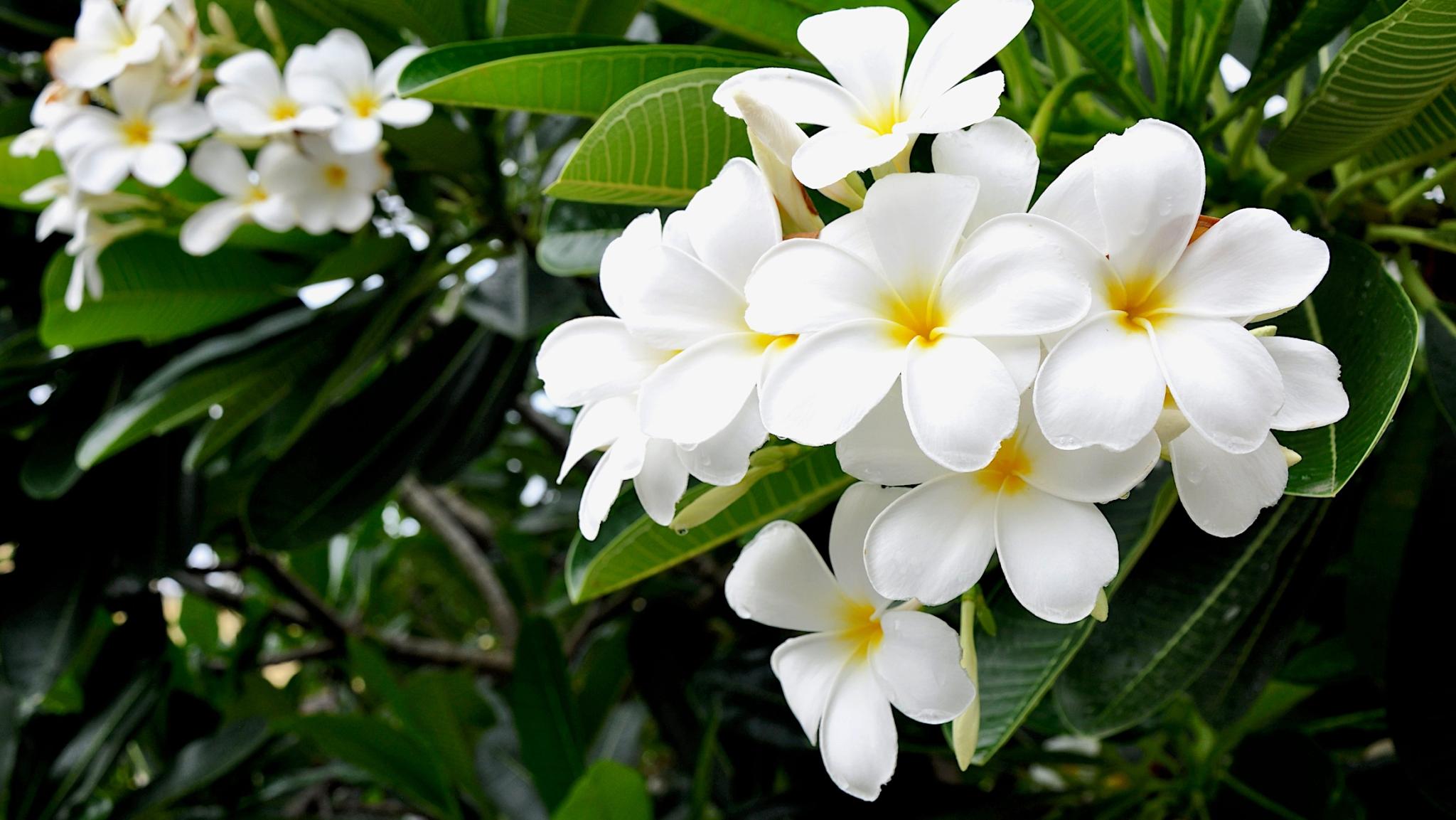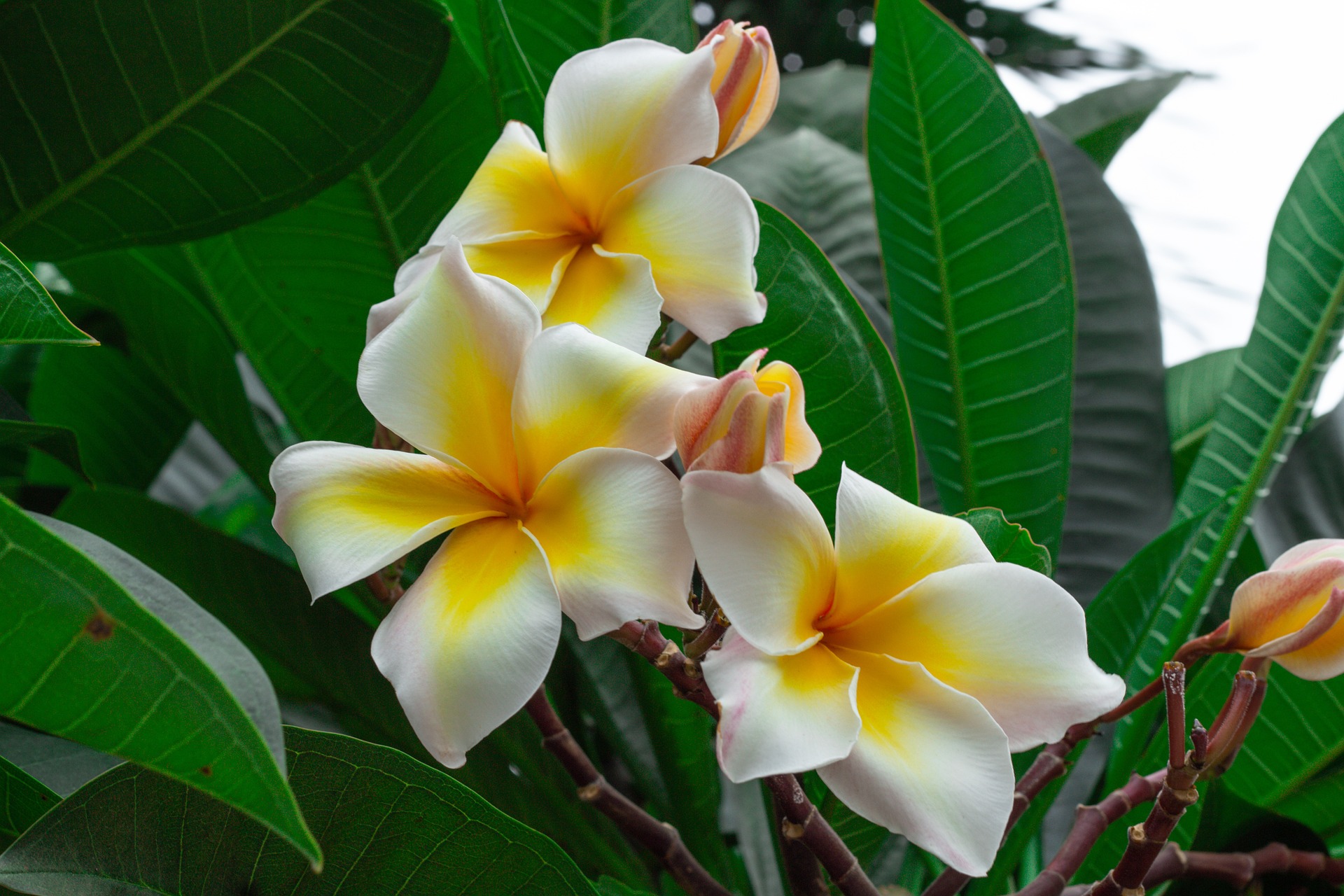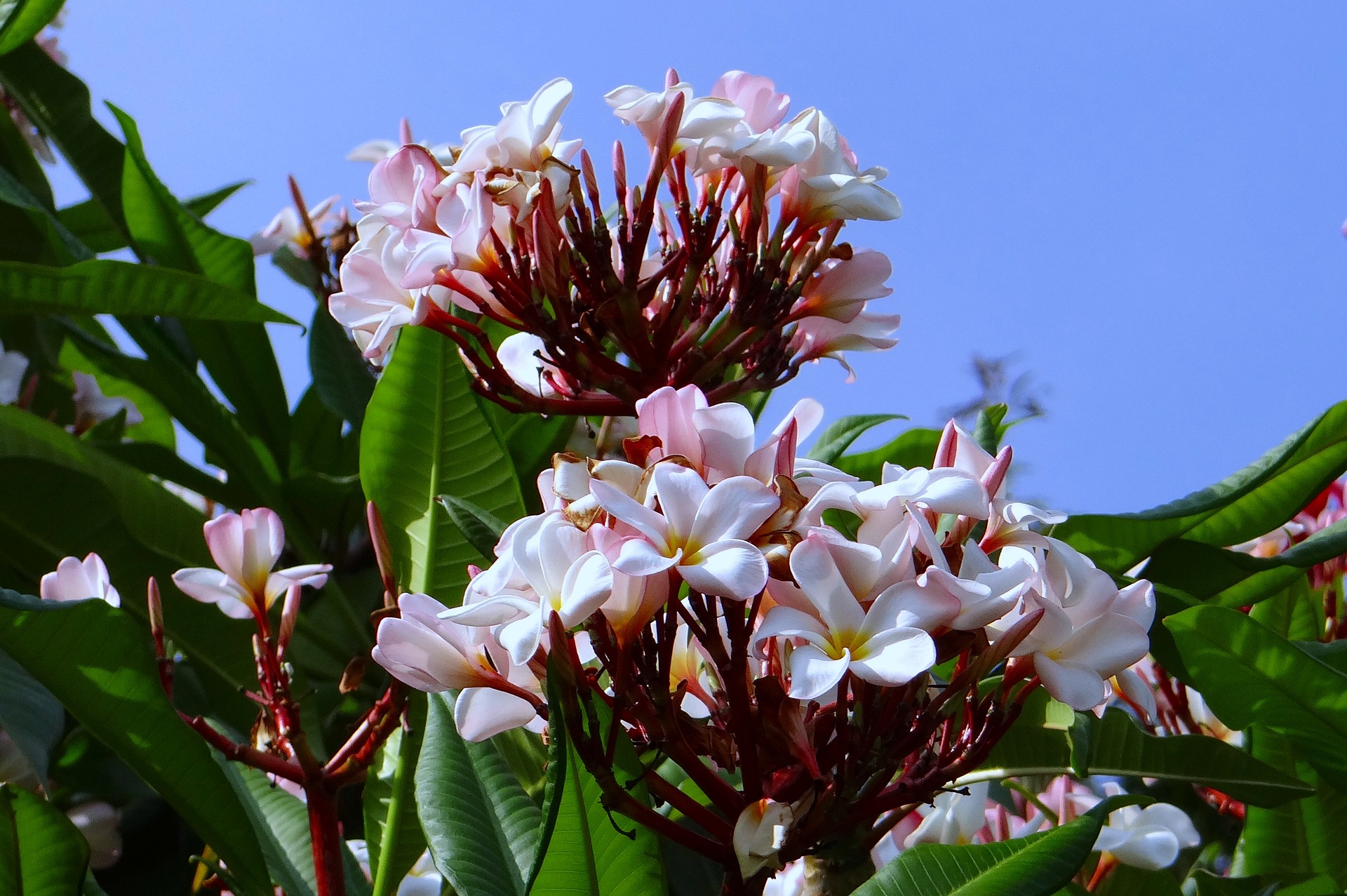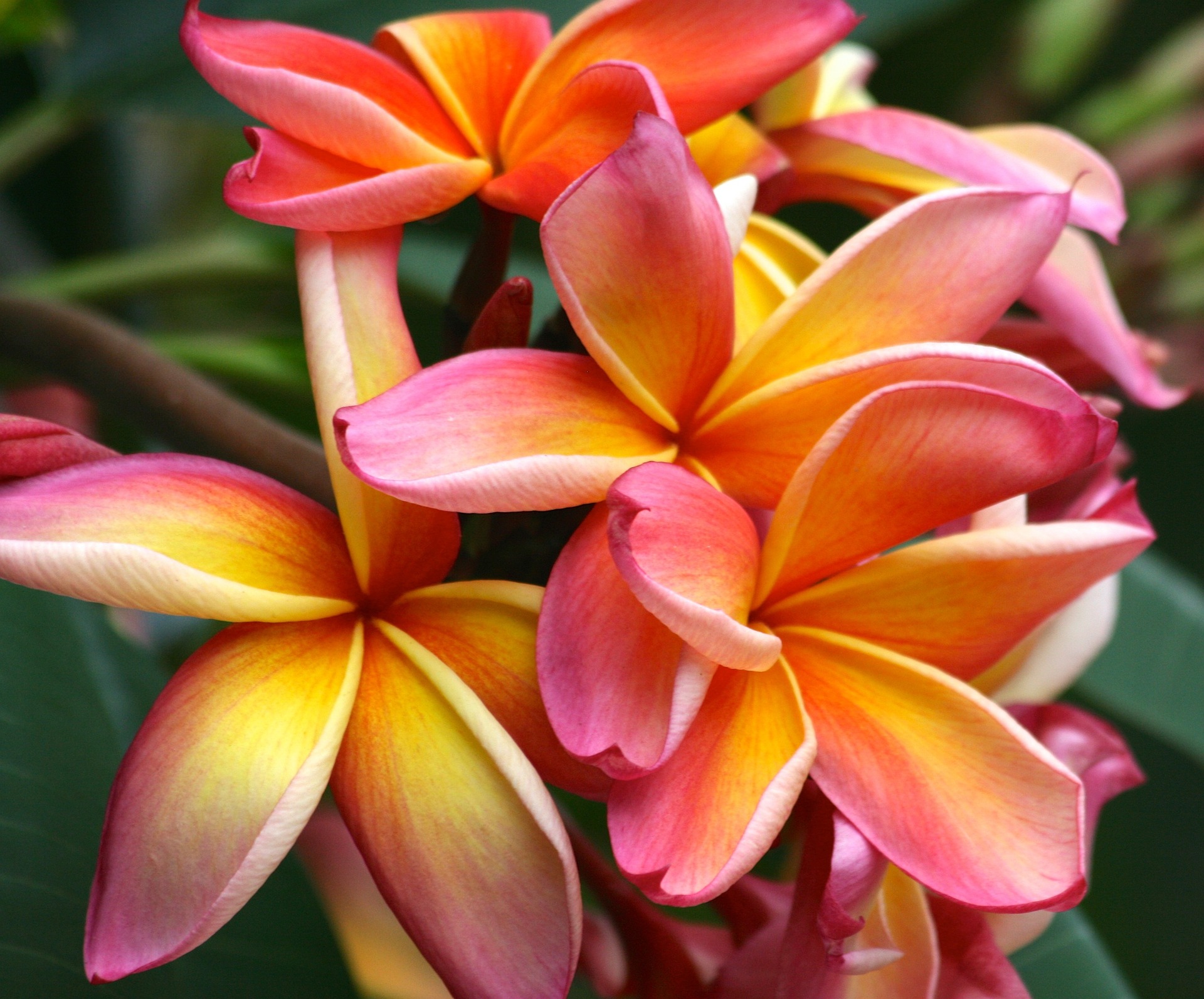
Planting, Growing, and Pruning Plumerias
Read Next
Types
- P. rubra ‘Aztec gold’ blooms in dreamy yellow-peach colors with large 3-4 inch flowers.
- P. rubra ‘Candy Stripe’ forms pinwheel blossoms in a kaleidoscope of fuchsia, orange, yellow and white.
- P. rubra ‘Vera Cruz Rose’ is another deciduous variety with highly overlapped and folded petals that transition from light pink to white with deep golden centers.
- P. alba is an evergreen with white flowers, yellow centers, and striking foliage.
Gardening Products
More Like This
Sounds like a great addition to your outdoor space. To keep it to the size you would like, you should prune your plumeria in very early spring to maintain the desired height and shape. If you are diligent about yearly pruning, you won't need to put your plant through a drastic prune, which could affect growth during that season.
And as for planting, make sure you use the right size container to give your plumeria's roots room to grow, but at the same time isn't too large. You will also want to use a well-draining potting mix. See above for more tips for planting.
Hope this helps!
Usually flowers at the tips is a sign that the plant lacks sunlight, which is why it's reaching up to find more light. Also, do you have a big enough pot? Plumeria need large pots to encourage optimal growth. Finally, encourage branching by making a shallow perpendicular cut above the branch at the first leaf node. Hope this is helpful.
- « Previous
- 1
- 2
- …
- 10
- Next »














Comments